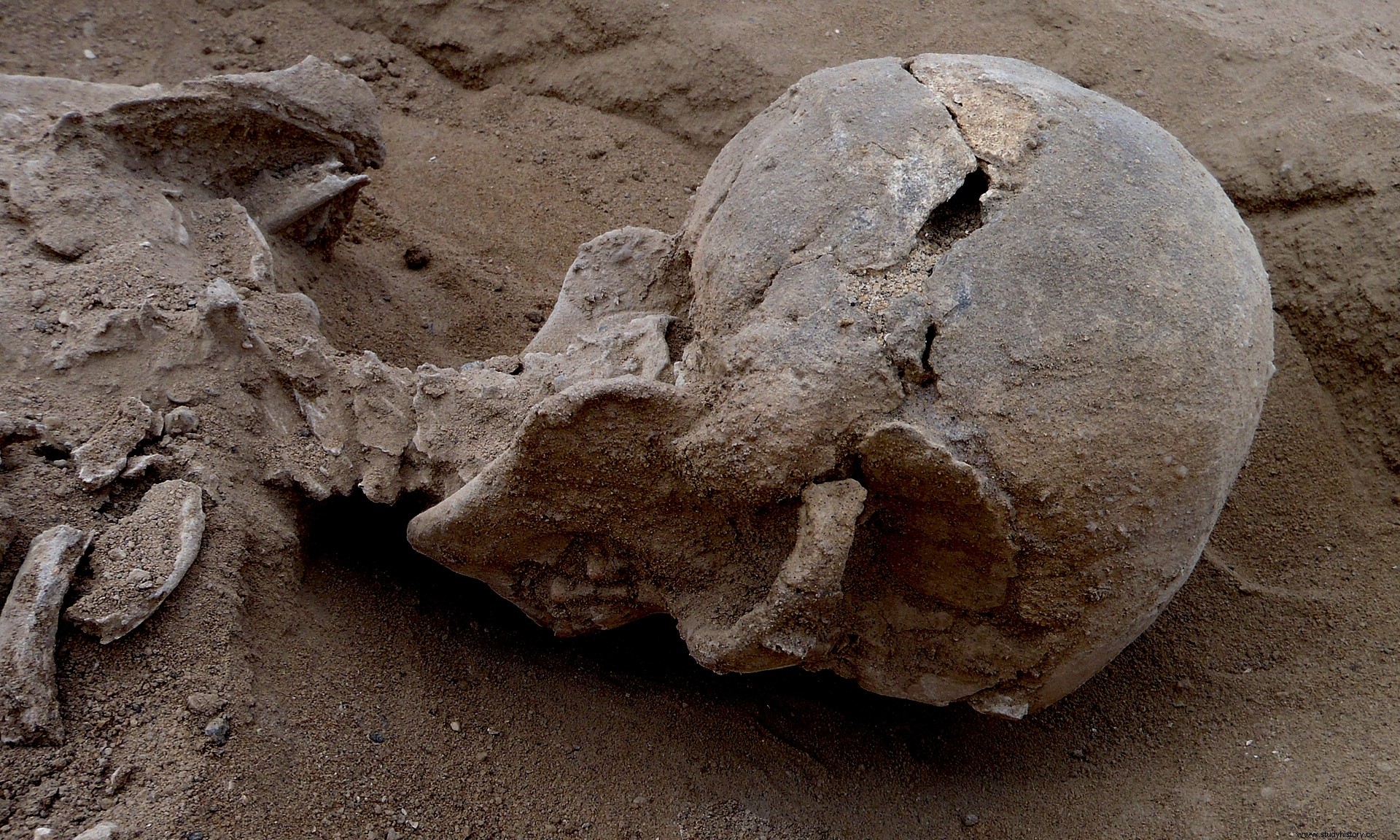
In Nataruk, near Lake Turkana, Kenya , reliable and proven evidence of the occurrence of a battle between prehistoric nomadic hunter-gatherers has been found. The conflict took place around 10,000 years ago and brutal acts were part of the fight, as several skulls with serious fractures, including facial injuries, as well as broken bones of hands, knees, ribs and arrowheads still embedded in bones were discovered in the scene. of war. A woman in the later stages of pregnancy was found with her forearms and legs crossed (because they were probably stuck), having fractured knees. A skeleton of a man was discovered containing in the skull a fragment of obsidian blade - a type of strong and sharp volcanic glass - and, in addition to this wound, with facial crushing, probably caused by a wooden club.

The fossilized remains were preserved in an ancient swamp area that dried up thousands of years ago, indicating that at the time of the conflict the region was fertile and with favorable means and conditions for survival. Because of this, scientists estimate that the Nataruk Massacre may have been the result of disputes over resources and territories, in addition to the possibility of an action to loot food stored in pots.
The University of Cambridge researchers involved in the excavations conclude that the Nataruk Massacre is an indication that violence is indeed a common practice among humans since ancient times.
